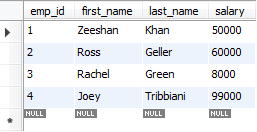INDEX OF Zeek MySQL
Spring Blog Index Page Basic Concepts of SQL (1-3) OPEN/CLOSE No Title Labels 1 Data, DataBase, DataModel Types & Infrastructure Infrastructure for DATA MODEL Types Of Data Models What is data and database? 2 Concepts of DBMS,RDBMS ,SQL and DBMS vs RDBMS DBMS vs RDBMS RDBMS and its features and SQL features What is DBMS its benefits 3 SQL Starting(Introduction, Data-Types,Constraints and Command-Groups) SQL Data Types SQL Constraints SQL |...









